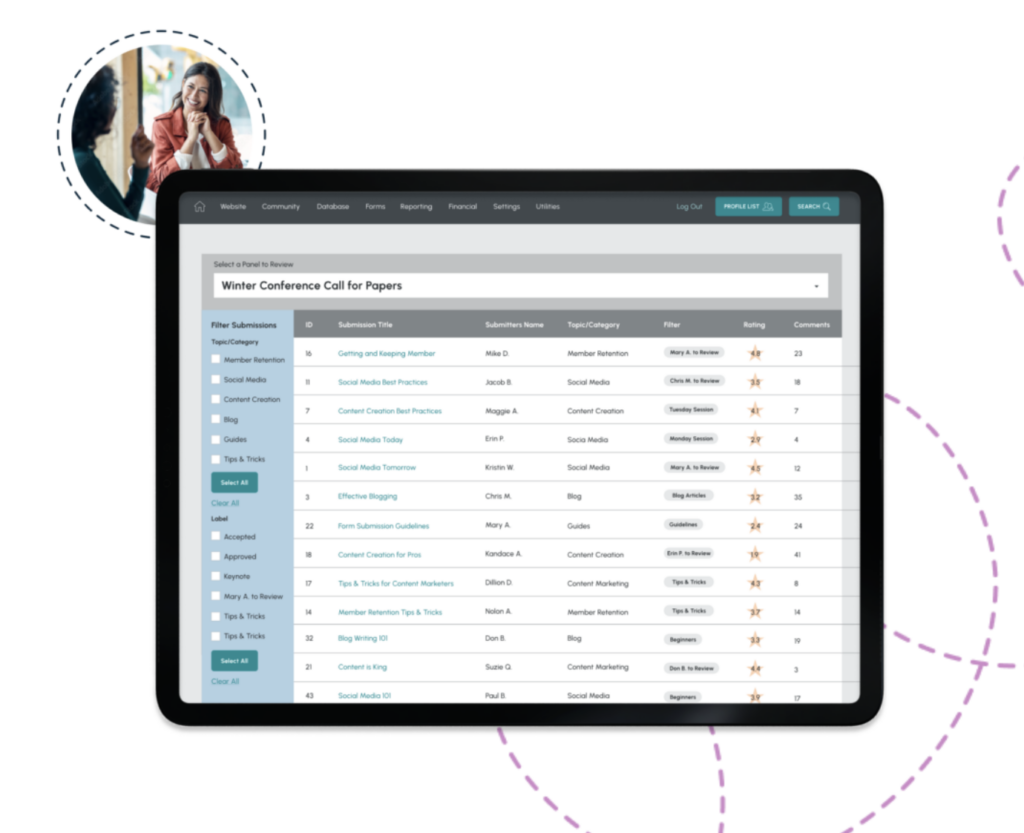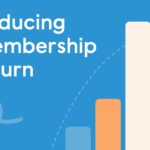Building a nonprofit membership program from the ground-up can seem daunting. But membership programs are one of the best ways for nonprofits to create reliable revenue streams—and stronger relationships with their supporters. In these programs, nonprofits provide members with incentives or benefits in exchange for donations and financial support. It’s a win-win: nonprofits get the funding they need, and members gain access to exclusive experiences, events, training, discounted services, and other perks.
In this guide, we’ll cover the fundamentals of nonprofit membership programs, identify which organizations benefit most, discuss their advantages, and pinpoint what makes them successful.
Table of Contents:
- What types of nonprofits create membership programs?
- What are the benefits of nonprofit membership programs?
- How do you build a successful nonprofit membership program?
What types of nonprofits create membership programs?
Membership programs have become an increasingly popular model for nonprofits. They not only provide a consistent revenue stream but also help to create a deeper sense of connection between the organization and its supporters. While almost any organization can benefit from introducing a membership model, certain types of nonprofits tend to be more commonly associated with these programs. The typical categories include:
- Professional/Trade Associations: Platforms where professionals can network, gain resources, and boost their careers.
- Advocacy Groups: Entities striving for change, whether social, political, or environmental.
- Cultural Institutions: Museums, art galleries, and theaters enriching community culture.
- Parks and Recreation Agencies: Organizations focused on preserving and promoting natural spaces for community enjoyment.
- Educational Institutions: Schools and colleges engaging alumni, students, and other stakeholders.
No matter the sector, the underlying objective remains the same: to drive a mission forward and foster a community around it.
What are the benefits of nonprofit membership programs?
A well-structured membership program is not just an added feature for a nonprofit—it can be a game-changer. Some compelling benefits include:
- Reliable source of revenue: Regular membership fees ensure a predictable flow of funds.
- Higher engagement: Members, being more invested, tend to participate more actively.
- Increased reach: Passionate members often spread the word, bringing in more supporters.
How do you build a successful nonprofit membership program?
To truly tap into the potential of membership programs, nonprofits must craft a meaningful experience for their members. Here’s how:
Identify a Clear Purpose
Before diving into program creation, it’s important to first define its purpose. This involves collaboration among team leaders and a clear understanding of the program’s main objectives.
The program should amplify your organization’s mission, turning members into active participants, whether it’s by fostering collaboration among professionals or supporting a community cause. Its objectives should balance strengthening member relationships with ensuring a consistent revenue source.
After establishing the program’s purpose, it’s essential to delineate the roles of both members and the organization. A clear definition ensures your team can smoothly integrate the membership initiative into your nonprofit’s operations.
Designate Your Program Leaders
In building a successful nonprofit membership program, it’s vital to identify the leaders. Decide who’s responsible for getting the program up and running, and who will lead the program on an ongoing basis. Two considerations are:
- Leadership Strategy: Consider if staff or volunteers will helm the program. If your current team is stretched thin, think about bringing in volunteers. But, if the program demands continuous attention, having a dedicated staff leader might be more effective.
- Team Size: The number of leaders for your program often aligns with your organization’s scale. A smaller nonprofit might thrive with a single lead, whereas larger entities could benefit from a committee or multiple individuals steering the program.
Having designated leadership in charge of spearheading your membership program will allow them to focus on building the program, delegate important tasks to others, and become a central resource for questions about the program.
Create Valuable Member Benefits
What does your nonprofit membership program have to offer? You’ll need to show members and donors that they are valued and give them a reason to stay. One of the best ways to do this is through nonprofit membership benefits. Here are some ideas for what you can offer your members:
- Members-only publications
- Committee and leadership opportunities
- Early access and/or special pricing to event tickets, workshops, classes, or community-building activities
- Exclusive discounts on products or services
- Free merchandise
- Digital or physical membership card
- Access to members-only content and online education
- Entry into a members-only online community
- Access to industry-specific job board with exclusive member pricing for postings
Ultimately, the right nonprofit membership benefits will increase the likelihood of membership renewal, recurring donations, or involvement with your organization.
Set Your Membership Fees
Deciding on your membership fees is a significant step in forming a nonprofit membership program. These fees should reflect the value offered to members and ensure they’re accessible to a broad audience. You should also research similar nonprofits and analyze their membership structures. This will give you an insight into market standards and help you set competitive rates that cater to both your nonprofit’s financial needs and your members’ capacity to pay.
A tiered membership system allows members to easily understand their membership dues and benefits, so they can choose the tier that fits their needs. This structure helps members grasp the dues and benefits associated with each level. For clarity, nonprofits should categorize their tiers by descriptive levels. A few examples of possible tiers include:
- Standard, Comprehensive, Premium
- Bronze, Silver, Gold
- Friend, Supporter, Champion
Defined levels not only clarify member benefits but also offer flexibility. As members perceive the value, they can move to a different tier, either upgrading for more benefits or downgrading if financially constrained.
Adopt a Robust Membership Management Solution
A membership management solution enables you to efficiently collect and organize member information. There are many different options available for membership management software and it is important to find the right fit for your nonprofit.
What is association management software (AMS)? An AMS tackles every aspect of membership management. AMS systems help organizations increase member engagement, improve recruitment and retention, and streamline their operations to save time and resources. Here are the top features to look for in membership management software:
- Member data management
- Website & content management system (CRM)
- Tiered dues management
- Email marketing
- Event management
- Financial management
- Reporting
Think your organization is ready for association management software? Click here to explore some AMS solutions you can choose from.

Build a Comprehensive Marketing Plan
Communicating your nonprofit membership benefits effectively is just as important as establishing them in the first place. To begin, define your audience and focus on crafting your core messaging. This will build the foundation for a multichannel marketing strategy aimed at attracting the members your program is built for.
Before you start marketing, though, you’ll want to identify key prospective members with your organization’s AMS. You can look for high-value individuals and create targeted communications lists. Once you’ve compiled this list, move to advertising the benefits of membership. Here are some ways you can get the word out:
- Link your member benefits on your homepage
- Include new benefits in email campaigns
- Create a “Benefit Spotlight” in your newsletters
- Create videos that show people your member benefits
- Post on social media about the benefits
Creating a comprehensive marketing plan will allow you to find the people best fit for your program.
Make Registration Easy
This step is pretty simple, but it can make or break your membership program. No one likes a complicated form with dozens of required fields. To maximize your registrations, you’ll want to:
- Make your form easy to find. Link it directly on your website and ensure that it works well on all different types of devices
- Reduce the number of required fields by only asking for information that is truly relevant.
- Make sure the platform you use to facilitate the sign-up process has a recurring membership renewal option.
Craft an Effective Member Communication Strategy
Regular communication will be a key component of your membership program. A successful nonprofit membership program shows your members what their contributions have accomplished and what you’ll accomplish in the future. How do you show impact? Let members know when you’ve accomplished something big and emphasize the role your members played in that accomplishment. Maybe your nonprofit was able to build a new house or maintain an afterschool program, and it wouldn’t have been possible without member support. Impact updates show members that their money is going towards your mission.
There are a variety of communication channels that you can choose from to deliver your message. Test these out, and evaluate which work best for your audience:
- Newsletter: The easiest way to get information out to your members is with a regular newsletter. You can include photos, videos, and links to event registrations that will engage your members.
- Social Media: You can share content on your social media profiles and create spaces for your members to interact on these social platforms, such as a member-only Facebook group.
- A Dedicated Online Community: An online community, like Personify Community, can be a great place for members to connect and collaborate with one another. This online space can help you boost participation and significantly increase the value of your membership.
A strong communication practice will keep members updated on your organization’s projects and events and remind them why they signed up in the first place. Just be sure that you walk the line between keeping them in the dark and spamming them with too much information.
Express Member Appreciation
In addition to the member benefits mentioned above, your organization should consider hosting special members-only events to express your gratitude. Get creative with this! You can host memorable events regardless of the size of your organization or budget. Here are a few types of events you could host:
- Casual dinner
- Cocktail and networking night
- Exclusive weekend getaway
The most important thing is showing your members how much they mean to your organization and making sure to thank them for their contributions. Your members should feel like their support is making a difference and that they are valued by your nonprofit. And when members feel valued? You see the impact on member satisfaction and member retention. Here are two ways to express your gratitude:
- Set up automated acknowledgements any time a member renews their membership, donates to your nonprofit, or participates in one of your organization’s activities. But make sure they don’t feel like an afterthought: automated messages should still feel personal.
- If you have the time, send thank-you notes personalized with an employee signature. Not every organization does this! It could help your program stand out.
Gather Feedback from Members
Gathering member feedback will help you strengthen your nonprofit membership program and tailor it to your members’ needs. Once these improvements are made, member retention will likely increase. It’s also a great way to learn how to increase membership in your nonprofit organization! Here are two ways you can gather feedback:
- Send regular surveys to members to assess their satisfaction with your membership program.
- Invite members to a members-only community in order to facilitate regular conversation.
And when you make the changes they’ve asked for? Let them know about them, so they feel heard.
Track and Analyze Member Data
Tracking your membership program’s success lets you see how well you’re fulfilling the goals you set in step one. This is where association management software comes in handy. With an AMS, you can track membership growth and change, including attendance and activity participation. Here is a list of suggested metrics that nonprofits should keep an eye on:
- New member acquisition rate
- Member retention rate
- Membership renewal rate
- Event attendance rates (for member-only events)
- Member participation in volunteer activities or programs
- Feedback and satisfaction scores from member surveys
- Revenue from membership dues
- Member website or portal engagement metrics
Tracking membership engagement helps you understand what is or isn’t working and can reveal opportunities for improvement. You can mark the progress you’ve made towards your nonprofit membership program’s goals and set realistic goals for the future.
Automate Renewal Reminders
Making it easy for your members to renew their membership is a key element of a successful nonprofit membership program. No one likes to spend time and energy searching for a renewal link and without prompt reminders, many people will forget to pay their dues in the first place. If possible, use membership management software to send out timely reminders and make the renewal process convenient for everyone involved.
Conduct Exit Interviews with Lapsed Members
Your membership program will always have turnover. However, your relationship doesn’t have to end when a member leaves the program. Some of the best feedback you’ll receive will be from lapsed members. With an exit interview, you can get to the heart of why members are leaving your program and make the changes that will retain more members in the future. Here are some tips for collecting feedback from lapsed members:
- If they have availability in their schedule, set up time to discuss why they’re leaving. Consider sending them a gift card in return!
- If they can’t make an interview, create and send out a member exit survey instead.
Collect feedback, implement improvements, and make your nonprofit’s membership program stronger than before. After you make these changes, you might even be able to win back these lapsed members!
Wrapping Up
A successful nonprofit membership program thrives on mutual growth. With the right strategies and a commitment to continuous improvement, such programs can elevate the nonprofit’s mission, fostering a strong, engaged, and vibrant community. As we emphasize the power of comprehensive membership management software, explore tools like MemberClicks to truly revolutionize your program.
For more resources on nonprofit membership programs and management tools, check out other articles and choose the right CRM for your organization.
– Association Management Software: 20+ Leading Providers
– A Guide To Learning Management Systems (LMS)
– Good things happen when you put your members first
– Top Membership Software Providers: Do More with MemberClicks
















